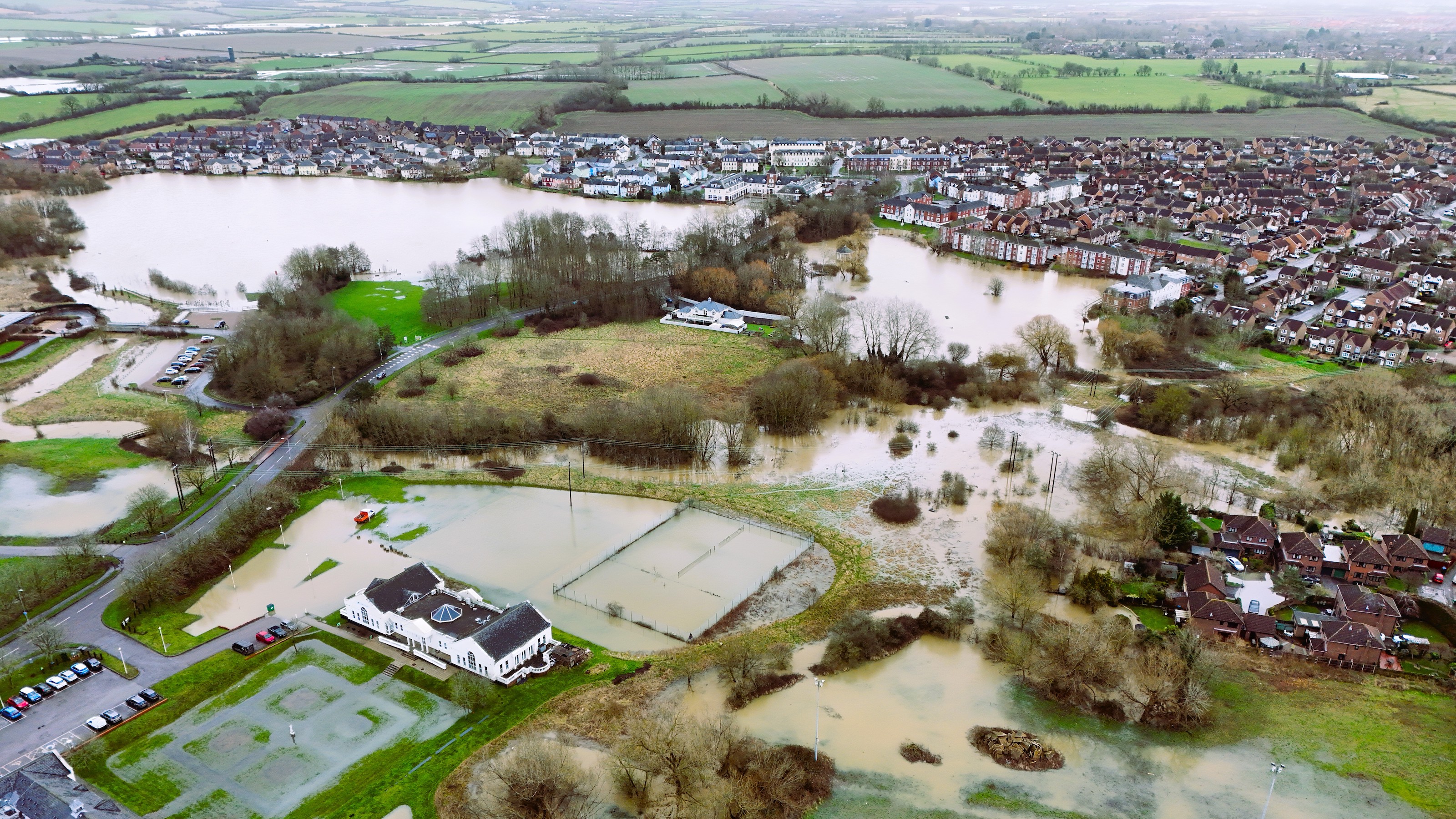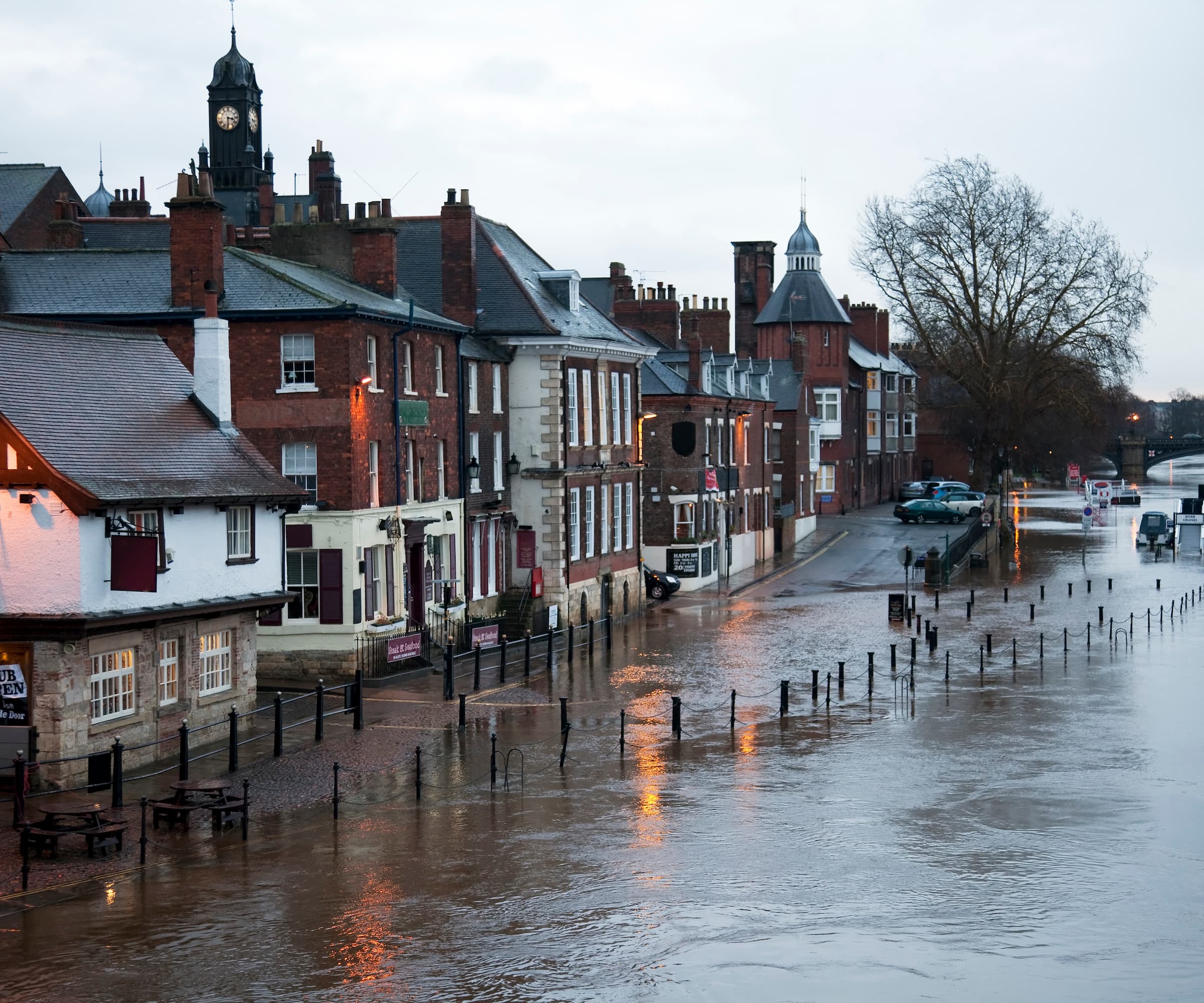What you should know before buying a house in a flood risk area
If you’re looking at homes for sale in a flood zone, be sure to consider the implications for borrowing, insurance, a future sale and more

Some 6.3 million homes in England are located in areas at risk of flooding, according to Environment Agency data published in December 2024. And with the number of properties under threat growing UK wide, there’s plenty you should know before buying a home in a flood risk area.
A warmer atmosphere along with factors such as the location of homes on flood plains mean that it’s vital to think about the possibility of flooding when you’re buying a house. It can have impacts you may not have considered along with the destruction and distress flooding causes.
Our guide has the details you need on checking on a home’s location, what you might find out in the conveyancing process, and what the implications of buying a home at risk of flood can be.
What flood risks are there?

Subscribe to Plotfinder.net to access over 15,000 building plots and properties that could become your next project
Homes are at risk of a number of different types of flooding. In the UK, flooding is typically from rivers, the sea, surface water, groundwater or sewers.
Rivers can flood because of heavy rain or snow or ice melting. Coastal flooding is a result of high tides and extreme weather. Surface water flooding can happen when heavy rain overwhelms drainage. Groundwater flooding, meanwhile, can happen when the ground cannot absorb any more water possibly because of heavy rainfall, but also due to another type of flooding. Sewer flooding can occur due to blockages or issues such as broken pipes.
Check if a home is in a flood zone
It’s best to find out whether a home is in a flood zone before viewing. You can check by postcode for a house in England, Scotland, Wales, and address in Northern Ireland.
You could also search for local news stories about flooding in the area in which you’re looking, so you can see the extent of recent floods. These will often refer to any previous incidents of flooding, too.
Bring your dream home to life with expert advice, how to guides and design inspiration. Sign up for our newsletter and get two free tickets to a Homebuilding & Renovating Show near you.

What conveyancing and surveys can reveal
If you put in an offer on a home, some information about flooding will be made available during the conveyancing process, but it is vital to understand its limits.
“All the information the conveyancer gathers on flooding will be from third parties,” says Natalie Beard, conveyancer at SAS Daniels. “It is up to you (and perhaps your mortgage lender) to interpret this information and then decide how far you wish to investigate this risk.”
The seller will be asked if the property has ever flooded to their knowledge in the property information form. “But this is not to be relied upon,” Natalie says. “The current seller can only answer from their knowledge and this likely will not predate their ownership. In addition, even during the seller’s ownership, there may be circumstances where flooding may have occurred that the seller is not aware of. The seller will also be asked within the form whether their buildings insurance is available on standard terms and a negative response may well relate to the insurer’s assessment of the risk of flooding.”
Searches will provide other information. “The environmental search will provide some limited information on flood risk,” says Natalie. “The assessment of the risk of flooding within the search is based on data from various bodies such as the Environment Agency and will take into account factors such as historical flooding, the proximity of waterways and the drainage network in the locality but it will likely not provide much detail as to these factors. Any physical defect of the property or nearby flood defences which may render the property vulnerable to flooding are not taken into account when assessing this risk.”
If the search shows a risk of flooding, you can commission a further search. “A flood search will provide a more in-depth desktop survey of the risk of flooding at the property,” Natalie explains. “It is essentially an extended version of the flood overview contained in the environmental report but it will set out for you in more detail the data used to provide its assessment. Similarly to the environmental search, it also does not take into account the physical condition of the property or of any existing flood defences.”
If these searches reveal a risk and you or your lender are concerned, you should consult an appropriately qualified surveyor, Natalie says. “Reports can be commissioned that involve an on-site visit and a detailed examination of the flooding history, the adequacy of flood defences and an assessment as to the likelihood of flooding occurring in the future together with potential remedial action that can be taken to prevent flooding or mitigate damage caused.”

Natalie Beard is a conveyancer in SAS Daniels’ residential property team. She has nine years’ experience working in conveyancing and is experienced at dealing with both existing homeowners and those embarking on the property ladder for the first time.
Mortgages for a home in a flood zone
Your ability to get a mortgage could be affected by a home’s location in a flood zone. “If you are buying with a mortgage, your conveyancer may need to report a risk of flooding to your mortgage lender and so even if you are not personally concerned about a risk of flooding, you may find a lender will require further information in order to satisfy themselves that their potential investment in the property is sound,” says Natalie Beard.
The risk level the home is deemed to present is important. Lenders might require flood insurance (see below) to be in place or they may decline a mortgage application depending on the risk. If you are buying in a flood zone, a mortgage broker can offer advice on the options.
Insurance for a home in a flood zone
It’s essential to be aware of the issues surrounding home insurance if you were to buy in a flood risk area.
“It can be more difficult to find home insurance if you are planning to buy a home in a flood risk area,” explains David Joyson, chief customer officer at specialist home insurer, Homeprotect, part of the Avantia Group.
“Many insurers are not willing to offer cover for a property which has previously suffered from flooding (either entirely or with the ‘flood peril’ excluded – which means you wouldn’t be able to make a future claim for a flood) although the government-backed Flood Re scheme is instrumental in helping to provide flood cover for properties in flood risk areas. This is a reinsurance scheme which allows insurance companies to offer more affordable flood cover to those living in high risk areas. Not all insurance providers take part in the scheme, and not all properties are eligible so it’s important to check this if you’re considering buying a house with a higher flood risk,” he says.
“It’s worth being aware that Flood Re will not cover properties built after 2009, as these properties should be built to specific building regulations which do not allow construction on flood plains,” he adds. “If a property were to be built on a flood plain post-2009, it is going to be extremely difficult for the owner of the house to obtain flood cover due to the increased risk and absence of Flood Re.”
You will likely need a specialist insurer if you are buying a home in a flood risk area, David notes. “Shopping around can help you get the best possible price, but it’s also vital to answer questions accurately when you take out a policy, for example the flood history of the property or exactly how close the property is to a river,” he says. If information isn’t accurate, cover could be withdrawn or a future claim not be accepted, he warns.

David is chief customer officer at Homeprotect, which specialises in providing coverage for unusual properties and circumstances, including those in flood-risk areas.

What else should you consider about buying a home in a flood zone?
As well as getting a mortgage and home insurance, there are other aspects of buying in a flood zone worth thinking about.
If the house were to flood, it could be filled with sewage as well as water, bringing health risks. Along with the necessity to replace furniture and belongings, flooding can cause structural damage, electrical problems and gas leaks, and it can lead to mould growth that is bad for health.
Think about the future, too. If a home hasn’t previously flooded and does while in your ownership, consider what will happen when you come to sell. Buyers might find the extra insurance costs off-putting, too.
Bear in mind that Flood Re (see above) is scheduled to end in 2039, affecting the availability of home insurance for you or a future buyer. Mortgages from some lenders on high risk homes may also be in question if Flood Re is not extended.
Measures to combat flooding
If you buy a home in a flood risk area, the sellers may have taken action to mitigate risks. They may have installed flood prevention measures (ie flood doors, flood barriers, self-closing air bricks, non-return valves), explains Emily Trill, principal hydrologist at Thomson Environmental Consultants. And they might also have used flood-resistant materials (ie tiles instead of carpets and flood resistant doors/windows) and raised ground floor electrical outlets, she says.
You might also see measures such as reduced areas of hardstanding and more permeable areas and planting to reduce runoff and increase infiltration, she notes, and where hardstanding can’t be replaced a planted border or French drain to capture runoff.
Community flood prevention can include maintenance of existing defences together with upgrades to withstand rising sea levels and increased rainfall associated with climate change, she notes. “Local authorities should also establish early warning systems, alerting residents in flood-prone areas and providing them with timely information.”

Emily Trill is Thomson Environmental Consultants’ principal hydrologist. She has extensive experience in delivering a wide range of hydrological and multi-disciplinary services, including flood risk assessments. Her career journey has spanned roles in oceanography and hydrology, research and consultancy, with a focus on natural flood management and nature-based solutions.
Buying a home in a flood zone demands careful consideration. While you may be able to do so at a good price, there is risk even if the home hasn’t flooded before. If there has been flooding and the local flood defences have been improved, you might feel more confident, but give careful consideration to issues such as getting a mortgage and insurance.

Sarah is a freelance journalist and editor writing for websites, national newspapers, and magazines. She’s spent most of her journalistic career specialising in homes.
She loves testing the latest home appliances and products, and investigating the benefits, costs and practicalities of home improvement. She is an experienced renovator and is currently remodelling the ground floor of her new home.
She was Executive Editor of Ideal Home and has worked for Your Home and Homes & Ideas. Her work has published by numerous titles, including The Guardian, channel4.com, Houzz, Grand Designs, Homes & Gardens, House Beautiful, Homes & Antiques, Real Homes, The English Home, Period Living, Beautiful Kitchens, Good Homes and Country Homes & Interiors.
